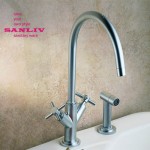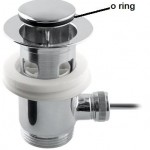How to check and fix hidden water leaks in your kitchen and bathroom. Find out how to detect hidden water leaks in your home using water meter, food coloring and paper towels. Damaging water leaks in your home are often quite easy to identify and fix. Major breaks in water pipes are noticed right away and the damage can be repaired rather quickly. What you may not realize is there can be many hidden leaks you cannot so easily detect. Water leaks account for higher water bills and structural damage.
Many communities encourage water conservation and offer tips for saving money on your water bill. Place a call to them for additional tips about water conservation. Wasting water not only raises your monthly bill, it also increases the chances of your water rates being raised in the future. The more pumps and water fixtures are used by your water supplier, the more often they need to be replaced. If you have a well as a water supply you should be concerned with the strain leaks may put on your system. Many people have wells that will occasionally run dry. By eliminating any hidden leaks you can lessen the chances of this happening.
Water leaks may not just cost you more money on your water bill; they could also cost you your home. Water leaking into the structure of your house can weaken wood. Sitting water in hidden spaces can also encourage the growth of molds. Some molds are dangerous and can drive you from your home.
Leaky faucets are a major waste of water. One slow dripping faucet can waste up to 20 gallons of water a day. Over the period of a year this can add up to six thousand gallons of water. Check all faucets in your home for any type of leak. The cost of repairs will save you money in the long run.
If you own a dishwasher it is suggested that you only run it when you have a full load ready to be cleaned. A typical dishwasher will use 15 gallons of water each load. Running loads that are only half full is a waste of water. Check around the bottom of your dishwasher for leaks. Leave paper towels around the outside of the machine while it is in use. When the dishwasher stops running check the paper towels for signs of water. If you find water leaking you should have your machine serviced immediately.
Leaking toilets are also a huge money waster. If your toilet runs often have the mechanisms in your tank completely replaced. Some toilets have slow leaks that are not noticeable. Slow water leaks in toilets can waste up to 100 gallons of water per day. Get some food coloring and drop some in the tank of your toilet. Watch the bowl of your toilet for a few minutes to see if any of the food coloring appears. Check again in fifteen minutes. If coloring appears this means you have a slow leak.
Take some time to inspect the pipes underneath your sinks and tubs. These pipes can become stopped up and may begin to leak water. These types of leaks will not cost you money on your water bill but they can cause serious damage to your home over the long run. To help eliminate this type of damage refrain from dumping grease and food particles down your drains. Keep tub drains clear of hair and other materials.
Inspect the hose on your washing machine for leaks. You can check for leaks near the floor with paper towels. Look for signs for floor warping to detect hidden leaks. Inspect your water heater in the same manner. Older models may rust and spring leaks. Check all pipes running to and from the appliance.
If you have a hose connected to an exterior faucet you should check it for leaks. The best way to avoid this is to turn off the water supply at the faucet rather than relying on the hose spray attachment to stop the flow of the water. A small leak can add gallons to your daily water usage.
You can also use your water meter to check for any hidden leaks. Turn off all faucets and make sure you are not running any appliances that use water. Check the reading on your meter and do so again in an hour. If your meter has moved you have a hidden water leak somewhere in your home.






